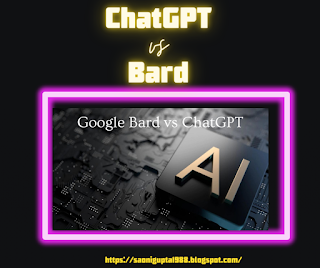Scrap Cooking: A Tasty Adventure
Scrap cooking, also known as zero-waste cooking or root-to-stem cooking, is a culinary movement focused on reducing food waste and making the most of every ingredient. Instead of discarding scraps and trimmings, scrap cooking encourages home cooks to use every part of their ingredients to create delicious and nutritious meals. In this blog, I'll take a closer look at "scrap cooking" and explore some tips and tricks for incorporating it into your everyday cooking.
Why Scrap Cooking Is Important?
Food waste is a major issue around the world, with an estimated 1.3 billion tons of food being wasted every year. This not only has significant environmental impacts, but it also means that perfectly good food is being discarded instead of being used to feed people.
Scrap cooking is one way to reduce food waste and make the most of every ingredient. By using parts of the ingredients that are typically discarded, such as carrot tops, broccoli stems, and beet greens, home cooks can create delicious and nutritious meals while also reducing their environmental impact.
Tips for Scrap Cooking!!!!
Here are some tips and tricks for incorporating scrap cooking into your everyday cooking:
Save vegetable scraps for broth: Instead of throwing away vegetable scraps like onion skins, carrot peels, and celery leaves, save them to make vegetable broth. Simply simmer the scraps in water for several hours to create a flavorful and nutritious base for soups and stews.
Use carrot tops in pesto: Carrot tops are often discarded, but they can be used to create a delicious and vibrant pesto. Simply blend the carrot tops with garlic, nuts, and Parmesan cheese for a flavorful sauce that can be used on pasta, sandwiches, or as a dip.
Roast broccoli stems: Broccoli stems are often overlooked, but they are just as delicious as the florets. Simply peel the tough outer layer and slice the stems into coins. Toss them with olive oil and seasonings and roast them in the oven for a tasty and nutritious side dish.
Use beet greens in stir-fries: Beet greens are often discarded, but they are full of nutrients and flavor. Simply sauté them with garlic and ginger for a tasty and nutritious addition to stir-fries and rice bowls.
Make fruit scraps into jam: Instead of throwing away overripe fruit, use it to create a delicious and flavorful jam. Simply simmer the fruit with sugar and water until it thickens into a spreadable consistency.
Trending Trends!!!!
Scrap cooking has become a popular trend in recent years as more people are looking for ways to reduce food waste and create sustainable meals. Here are a few scrap cooking trends to keep an eye on:
Root-to-Stem Cooking: Root-to-stem cooking is a trend that focuses on using every part of the vegetable, from the roots to the leaves. It's all about maximizing the nutritional value of the produce while reducing waste. This means using things like carrot tops and beet greens in salads or blending celery leaves into soups and sauces.
"Ugly" Produce: "Ugly" produce is produce that may not look perfect but is still perfectly good to eat. This trend encourages people to buy and use produce that may be misshapen or have small blemishes, reducing food waste and supporting sustainable agriculture.
Nose-to-Tail Cooking: Nose-to-tail cooking is a trend that focuses on using every part of the animal, from the nose to the tail. It's all about maximizing the nutritional value of the meat while reducing waste. This means using things like chicken feet and beef bones to make broth or cooking organ meats like liver and heart.
Preserving Food: Preserving food is a trend that involves using techniques like canning, pickling, and fermenting to preserve food and extend its shelf life. This allows people to make use of produce that may be in season but won't last long, reducing food waste and supporting sustainable agriculture.
DIY Pantry Staples: DIY pantry staples are a trend that involves making your own condiments, spices, and other pantry staples instead of buying them pre-made. This allows people to reduce packaging waste and control the quality of the ingredients used in their cooking.
Overall, scrap cooking is a trend that's all about being resourceful and creative in the kitchen. By using every part of your ingredients and reducing waste, you can create sustainable meals that are good for your body and the planet.
Mystical Myths!!!!
There are a few myths about scrap cooking that should be debunked:
Myth: Scrap cooking is only for vegetarians or vegans.
Fact: Scrap cooking is for everyone, regardless of your dietary preferences. Whether you eat meat, fish, or dairy, there are always ways to use up every part of your ingredients.
Myth: Scrap cooking is time-consuming and difficult.
Fact: While it does require a bit more effort and planning, scrap cooking can actually save you time and money in the long run. By using up ingredients you already have on hand, you can reduce trips to the grocery store and save money on food waste.
Myth: Scrap cooking is only for experienced cooks.
Fact: Anyone can learn to scrap cook with a bit of practice and experimentation. It's all about being creative and resourceful in the kitchen.
Myth: Scrap cooking is only for leftovers.
Fact: While leftovers are a great place to start, scrap cooking is about using every part of your ingredients, not just the leftovers. For example, you can use carrot tops in a salad or turn vegetable scraps into broth.
Myth: Scrap cooking isn't worth the effort.
Fact: Scrap cooking can be incredibly rewarding, both for your taste buds and the environment. By reducing food waste, you're doing your part to help the planet while creating delicious and nutritious meals. Plus, getting creative in the kitchen can be a fun and rewarding experience.
A Wrap-Up
Scrap cooking is a great way to reduce food waste and make the most of every ingredient. By using scraps and trimmings to create delicious and nutritious meals, home cooks can make a positive impact on the environment while also saving money and getting creative in the kitchen. So, next time you're cooking, consider how you can use every part of your ingredients and embrace the scrap cooking movement!






Very nice 👍
ReplyDeleteThank you !!! ❤️
Delete